
Gros: The Vibrant Heart of San Sebastián
Discover Gros in San Sebastián: A vibrant neighborhood blending surf culture, culinary delights, and dynamic nightlife, all set against the backdrop of Zurriola Beach.
Gros, nestled on the eastern bank of the Urumea River, is a lively and trendy neighborhood in San Sebastián. Known for its youthful energy and dynamic atmosphere, Gros offers a perfect blend of surf culture, culinary delights, and vibrant nightlife. The neighborhood's proximity to Zurriola Beach makes it a haven for surfers and beach lovers alike. The wide stretch of sand and consistent waves attract both beginners and seasoned surfers, creating a lively and energetic beach scene. Wander through the streets of Gros and you'll discover a myriad of bars, cafes, and restaurants. The neighborhood is particularly famous for its pintxos bars, where you can sample a variety of these delicious small bites. The bustling Mercado de San Martín is also a must-visit, offering fresh local produce and a true taste of Basque culture. Gros is also home to many cultural venues, including the Kursaal Congress Centre and Auditorium, which hosts numerous events and concerts throughout the year. Art lovers will appreciate the striking street art scattered throughout the neighborhood, adding a splash of color to the urban landscape. Gros is a place where tradition meets modernity, making it a fascinating area to explore. Whether you're a foodie, a surfer, or just looking to soak up the local vibe, Gros has something for everyone.
Local tips in Gros
- Visit Zurriola Beach for surfing or just relaxing on the sand.
- Sample pintxos at local bars, especially in the evenings.
- Explore the Mercado de San Martín for fresh produce and local flavors.
- Check out the events at the Kursaal Congress Centre and Auditorium.
- Take a walk to admire the vibrant street art throughout the neighborhood.
Gros: The Vibrant Heart of San Sebastián
Gros, nestled on the eastern bank of the Urumea River, is a lively and trendy neighborhood in San Sebastián. Known for its youthful energy and dynamic atmosphere, Gros offers a perfect blend of surf culture, culinary delights, and vibrant nightlife. The neighborhood's proximity to Zurriola Beach makes it a haven for surfers and beach lovers alike. The wide stretch of sand and consistent waves attract both beginners and seasoned surfers, creating a lively and energetic beach scene. Wander through the streets of Gros and you'll discover a myriad of bars, cafes, and restaurants. The neighborhood is particularly famous for its pintxos bars, where you can sample a variety of these delicious small bites. The bustling Mercado de San Martín is also a must-visit, offering fresh local produce and a true taste of Basque culture. Gros is also home to many cultural venues, including the Kursaal Congress Centre and Auditorium, which hosts numerous events and concerts throughout the year. Art lovers will appreciate the striking street art scattered throughout the neighborhood, adding a splash of color to the urban landscape. Gros is a place where tradition meets modernity, making it a fascinating area to explore. Whether you're a foodie, a surfer, or just looking to soak up the local vibe, Gros has something for everyone.
Iconic landmarks you can’t miss
Gipuzkoa Plaza
Explore the beauty of Gipuzkoa Plaza, a peaceful park in Donostia-San Sebastian, surrounded by stunning architecture and vibrant local culture.

Miramar Jauregia
Discover the elegance of Miramar Jauregia in Donostia-San Sebastian, where history meets stunning coastal views in a beautiful park setting.

San Telmo Museum
Explore the rich tapestry of Basque culture and history at San Telmo Museum, a must-visit art destination in San Sebastián.
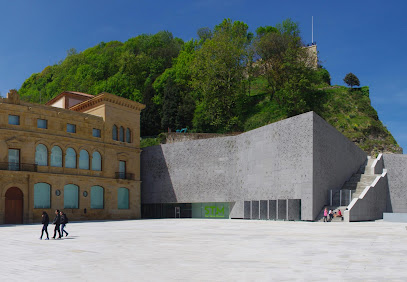
Motako Gaztelua
Discover the historic Motako Gaztelua, a stunning castle with breathtaking views of San Sebastián and an unforgettable hiking experience.

Maria Kristina Zubia
Discover the stunning architecture and breathtaking views of María Cristina Bridge, a key landmark in Donostia-San Sebastián's scenic beauty.

Plaza de la Constitucion
Discover the vibrant heart of Donostia-San Sebastián at Plaza de la Constitución, a historical landmark brimming with culture, cuisine, and captivating architecture.
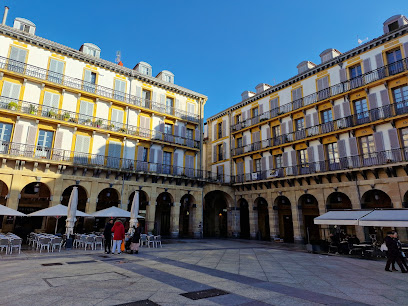
Kursaal zubia
Discover the breathtaking Kursaal Zubia, a stunning bridge connecting vibrant city life with the natural beauty of San Sebastián's coastline.
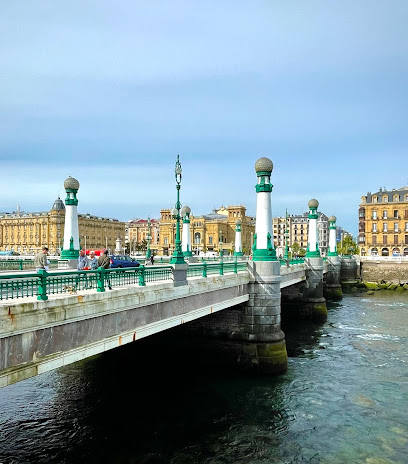
Baluarte del Mirador
Experience breathtaking views and rich history at Baluarte del Mirador, a must-see observation deck in Donostia-San Sebastián.
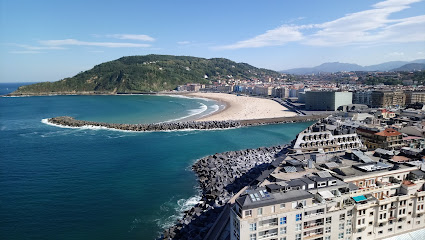
Monte Urgull
Discover the breathtaking views and historical significance of Monte Urgull, a must-see observation deck in San Sebastián, Spain.

Gros, Donostia-San Sebastián
Explore Gros in Donostia-San Sebastián: A vibrant district filled with stunning beaches, culinary delights, and rich cultural experiences waiting for you.

Essential places to dine
Casa Senra Donostia
Experience authentic Basque cuisine at Casa Senra in Donostia-San Sebastián - where every bite tells a story.

La Txuleteria
Experience authentic Basque cuisine at La Txuleteria, where every dish tells a story through flavor and tradition.

Ikaitz jatetxea
Discover Ikaitz Jatetxea: A Mediterranean dining experience blending Basque tradition with modern culinary artistry in San Sebastián.

Tedone Jatetxea berria
Experience health-focused Basque cuisine at Tedone Jatetxea Berria - where gluten-free and vegetarian options meet flavorful innovation.

Bar Desy
Experience authentic Basque flavors at Bar Desy in San Sebastian – a must-visit tapas bar for food lovers!

La Zurri Jatetxea
Experience authentic Basque cuisine at La Zurri Jatetxea, where every dish tells a story of flavor and tradition in San Sebastián.
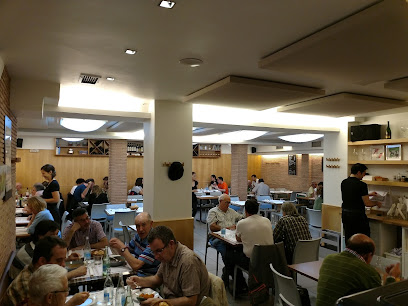
El KBZÓN jatetxea
Discover the essence of Basque cuisine at El KBZÓN Jatetxea—where every meal is a celebration of flavor in Donostia-San Sebastian.

Geralds Bar
Experience delicious grilled dishes and unique wines at Gerald's Bar in Donostia-San Sebastian, where culinary excellence meets vibrant atmosphere.

Galerna Jan Edan
Discover authentic Basque cuisine at Galerna Jan Edan in San Sebastián – where tradition meets contemporary dining.

Bodega Donostiarra, 16. Lamaskerida
Experience authentic Basque cuisine at Bodega Donostiarra – where tradition meets taste in San Sebastian.

Markets, malls and hidden boutiques
CCHIKA - Tienda de moda Mujer y Hombre.
Discover CCHIKA, the ultimate destination for stylish clothing and creative inspiration in Donostia-San Sebastian.
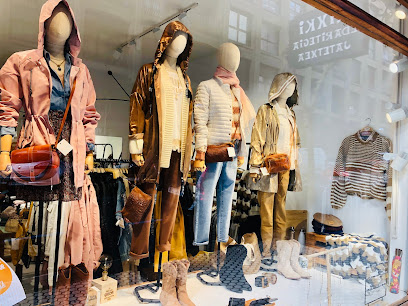
Vintage Closet
Explore the eclectic charm of Vintage Closet, a unique clothing store in San Sebastian, offering a curated selection of stylish vintage fashion.
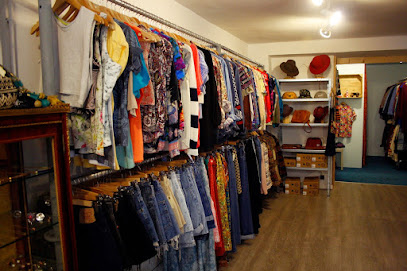
El Merkadillo
Discover El Merkadillo, your go-to formal wear store in Donostia-San Sebastián, offering exquisite linens and stylish underwear for every occasion.

PAS SI SIMPLE… Donostia
Explore PAS SI SIMPLE… in Donostia for a unique blend of vintage clothing, chic accessories, and exquisite fashion that reflects Basque creativity.

SIX STORE
Explore stylish clothing and unique accessories at SIX STORE in Donostia-San Sebastián, the ultimate fashion destination for trendy shoppers.

s o u l e .
Explore the unique blend of local craftsmanship and curated goods at s o u l e ., a charming boutique in Donostia-San Sebastian.

AMAIA
Discover Amaia, a stylish clothing store in Donostia-San Sebastian, offering a curated selection of dresses and apparel that blend local charm with modern fashion.

MATTEA SHOP
Explore the trendy MATTEA SHOP in Donostia-San Sebastian for unique clothing and accessories that reflect local style and culture.

Lotus Gros
Explore Lotus Gros in Donostia-San Sebastian – a unique store showcasing local artisan crafts and delightful souvenirs that capture the Basque spirit.

Boutique Blanca
Discover the latest women's fashion trends at Boutique Blanca in Donostia-San Sebastian's vibrant Gran Vía area, where style meets sophistication.

Essential bars & hidden hideouts
Bar Bergara
Experience the vibrant flavors of Basque cuisine at Bar Bergara, a top tapas bar in the heart of Donostia-San Sebastian.

Mala Gissona Beer House Gros
Experience the best of local craft beer and gourmet burgers at Mala Gissona Beer House Gros in Donostia-San Sebastian's vibrant Gros neighborhood.

La Gintonería Donostiarra
Discover the vibrant nightlife of Donostia-San Sebastián at La Gintonería Donostiarra, where exceptional cocktails and a welcoming atmosphere await.
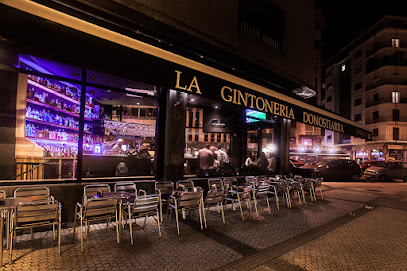
Bar Desy
Experience the vibrant flavors of Basque cuisine at Bar Desy, a top-rated tapas bar in the heart of San Sebastián.
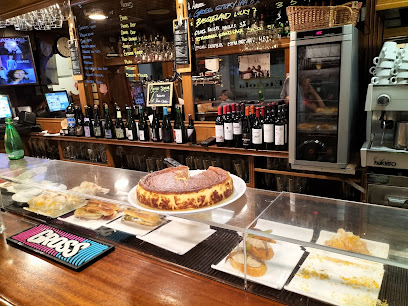
Geralds Bar
Discover Gerald's Bar: A delightful grill bar in Donostia-San Sebastian offering fresh dishes and a cozy atmosphere perfect for tourists.

Teorema
Discover the vibrant ambiance and delightful local flavors at Teorema, a must-visit bar in the heart of Donostia-San Sebastian.

Ipotx taberna
Discover the vibrant flavors of Basque cuisine at Ipotx Taberna, a cozy tapas bar in the heart of Donostia-San Sebastian.

Ondarra
Explore Ondarra, a lively tavern in Donostia offering local brews, cocktails, and delicious Basque cuisine in a vibrant atmosphere.

Bar Kixki
Experience the vibrant atmosphere and authentic flavors of Donostia-San Sebastian at Bar Kixki, the perfect spot for locals and tourists alike.

VINTAGE Bar
Discover VINTAGE Bar in Donostia-San Sebastian – where traditional Basque flavors meet a vibrant atmosphere, perfect for travelers seeking local charm.

Local Phrases
-
- HelloHola
[oh-la] - GoodbyeAdiós
[ah-dee-ohs] - YesSí
[see] - NoNo
[noh] - Please/You're welcomePor favor/De nada
[por fah-vor/deh nah-dah] - Thank youGracias
[grah-thyahs] - Excuse me/SorryPerdón/Lo siento
[pair-dohn/loh see-ehn-toh] - How are you?¿Cómo estás?
[koh-moh ehs-tahs] - Fine. And you?Bien. ¿Y tú?
[byen. ee too] - Do you speak English?¿Hablas inglés?
[ah-blahs een-glays] - I don't understandNo entiendo
[noh ehn-tyen-doh]
- HelloHola
-
- I'd like to see the menu, pleaseMe gustaría ver el menú, por favor
[meh goo-stah-ree-ah behr ehl meh-noo, por fah-vor] - I don't eat meatNo como carne
[noh koh-moh kahr-neh] - Cheers!¡Salud!
[sah-lood] - I would like to pay, pleaseMe gustaría pagar, por favor
[meh goo-stah-ree-ah pah-gar, por fah-vor]
- I'd like to see the menu, pleaseMe gustaría ver el menú, por favor
-
- Help!¡Ayuda!
[ah-yoo-dah] - Go away!¡Vete!
[veh-teh] - Call the Police!¡Llama a la policía!
[yah-mah ah lah poh-lee-see-ah] - Call a doctor!¡Llama a un médico!
[yah-mah ah oon meh-dee-koh] - I'm lostEstoy perdido
[ehs-toy pair-dee-doh] - I'm illEstoy enfermo
[ehs-toy ehn-fehr-moh]
- Help!¡Ayuda!
-
- I'd like to buy...Me gustaría comprar...
[meh goo-stah-ree-ah kohm-prahr] - I'm just lookingSolo estoy mirando
[soh-loh ehs-toy meer-ahn-doh] - How much is it?¿Cuánto cuesta?
[kwan-toh kwehs-tah] - That's too expensiveEsto es demasiado caro
[ehs-toh ehs deh-mah-syah-doh kah-roh] - Can you lower the price?¿Puedes bajar el precio?
[pweh-dehs bah-har ehl pree-thyoh]
- I'd like to buy...Me gustaría comprar...
-
- What time is it?¿Qué hora es?
[keh oh-rah ehs] - It's one o'clockEs la una
[ehs lah oo-nah] - Half past (10)Y media (10)
[ee meh-dee-ah (deez ee-ees)] - MorningMañana
[mah-nyah-nah] - AfternoonTarde
[tahr-deh] - EveningNoche
[noh-cheh] - YesterdayAyer
[ah-yehr] - TodayHoy
[oy] - TomorrowMañana
[mah-nyah-nah] - 1Uno
[oo-noh] - 2Dos
[dohs] - 3Tres
[trehs] - 4Cuatro
[kwah-troh] - 5Cinco
[theen-koh] - 6Seis
[says] - 7Siete
[syeh-teh] - 8Ocho
[oh-choh] - 9Nueve
[nweh-veh] - 10Diez
[dyeth]
- What time is it?¿Qué hora es?
-
- Where's a/the...?¿Dónde está...?
[dohn-deh ehs-tah] - What's the address?¿Cuál es la dirección?
[kwal ehs lah dee-rehk-syon] - Can you show me (on the map)?¿Puedes mostrarme (en el mapa)?
[pweh-dehs mohs-trar-meh (ehn ehl mah-pah)] - When's the next (bus)?¿Cuándo es el próximo (autobús)?
[kwan-doh ehs ehl proh-ksee-moh (ow-toh-boos)] - A ticket (to ....)Un billete (a ....)
[oon bee-yeh-teh (ah)]
- Where's a/the...?¿Dónde está...?
History of Gros
-
The Gros neighbourhood's history dates back to the late 19th century when it began to emerge as a distinct area of San Sebastián. Originally a fishing village, it was known for its maritime activities and close-knit community. The construction of the railway in the 1860s helped to boost its development, connecting it more closely with the rest of the city and facilitating the movement of goods and people.
-
The late 1800s marked a turning point for Gros as it began to urbanize rapidly. The influx of tourists to San Sebastián, attracted by its beaches and climate, led to the development of hotels and other facilities in Gros. The neighbourhood became a popular destination for visitors, contributing to its vibrant atmosphere and cultural diversity.
-
During the Spanish Civil War (1936-1939), Gros, like much of San Sebastián, experienced significant turmoil. The area was affected by bombings and military actions, which led to destruction and a loss of life. Post-war reconstruction efforts were necessary to rebuild the neighbourhood and restore its vitality.
-
In the latter half of the 20th century, Gros underwent a cultural renaissance. The establishment of cultural institutions, such as the Kursaal Congress Centre in the 1990s, transformed the area into a hub for arts and entertainment. The annual San Sebastián International Film Festival, held at the Kursaal, has further enhanced Gros's reputation as a cultural hotspot.
-
Today, Gros is known for its unique blend of traditional Basque culture and modern urban life. The neighbourhood features a vibrant culinary scene, renowned surf spots at Zurriola Beach, and a lively atmosphere, particularly during festivals such as the Tamborrada. Its streets are lined with pintxos bars, cafes, and shops, reflecting the dynamic spirit of San Sebastián.
Gros Essentials
-
Gros is conveniently located just a short walk from the city center of San Sebastián. You can easily reach Gros from other neighborhoods by walking across the Urumea River via the Zurriola Bridge. Public transport options include the local bus services (Dbus) that connect Gros to various parts of the city. The nearest train station is in the city center, with services connecting you to other Spanish cities, including Madrid and Barcelona.
-
Gros is compact and pedestrian-friendly, making walking the best way to explore the neighborhood. Public buses (Dbus) operate throughout the area, providing access to other neighborhoods in San Sebastián. For those who prefer cycling, bike rental services are available, and there are designated bike lanes. In summer, you may find e-scooter rentals for a quick way to get around.
-
Gros is generally a safe neighborhood for tourists. However, like any urban area, standard precautions should be taken. Avoid walking alone at night in poorly lit areas, particularly the quieter streets away from the main thoroughfare. Be cautious of pickpockets in crowded places, especially near popular tourist spots like Zurriola Beach.
-
In case of emergency, dial 112 for immediate assistance. Emergency services are generally prompt and efficient. The nearest hospital is Hospital Donostia, located a short distance from Gros. It is advisable to have travel insurance covering medical emergencies. For minor health issues, local pharmacies are available, and they typically have English-speaking staff.
-
Fashion: Do wear comfortable clothing and shoes, especially for walking. Don't wear overly casual beachwear away from the beach area. Religion: Do respect local customs and dress modestly when visiting religious sites. Public Transport: Do be courteous and offer your seat to elderly passengers. Don't eat or drink on public transport. Greetings: Do greet with a friendly 'Hola' and a smile. Eating & Drinking: Do try pintxos at local bars. Don't be offended if you are asked to share tables, as it is common in local dining culture.
-
To experience Gros like a local, visit the vibrant Mercado de la Bretxa, where you can find fresh produce and local delicacies. Spend an afternoon at Zurriola Beach, popular with surfers and locals alike. For a unique experience, try the pintxos bars in the area, especially in the streets of Pescadería and San Francisco. Don't miss the cultural events at Tabakalera, a contemporary culture center that often hosts exhibitions, workshops, and film screenings.
Nearby Cities to Gros
-
Things To Do in Pamplona
-
Things To Do in Bilbao
-
Things To Do in Santander
-
Things To Do in Lourdes
-
Things To Do in Burgos
-
Things To Do in Huesca
-
Things To Do in Bordeaux
-
Things To Do in Zaragoza
-
Things To Do in Toulouse
-
Things To Do in Lleida
-
Things To Do in Valladolid
-
Things To Do in Arinsal
-
Things To Do in El Serrat
-
Things To Do in La Massana
-
Things To Do in Ordino








